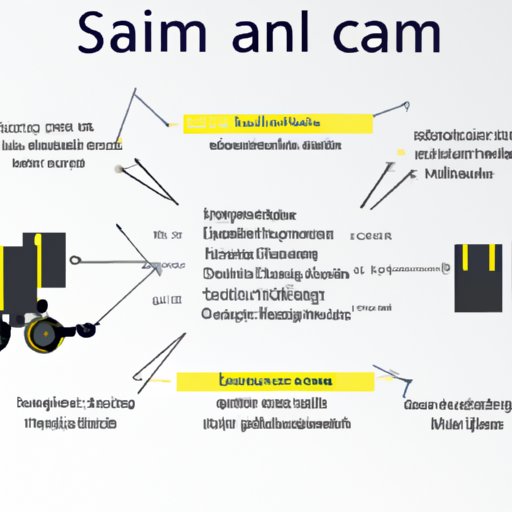Introduction: What Is Slam in Robotics?
Slam (simultaneous localization and mapping) is a technology used to enable robots to navigate their surroundings autonomously. It combines the use of sensors and algorithms to allow robots to build a map of their environment and accurately localize themselves within it. This technology has become increasingly important in recent years as robots are being used for a variety of tasks, from autonomous driving to drone navigation. In this article, we will explore what slam is, its benefits and challenges, different types of slam, and case studies of successful applications.
Definition of Slam in Robotics
Slam stands for simultaneous localization and mapping, and it is a technology used by robots to create a map of their environment and accurately determine their position within it. This technology combines the use of sensors, data processing, and algorithms to enable robots to autonomously navigate their surroundings. By using slam, robots can build a map of their environment and use it to identify obstacles, plan routes, and even detect changes in the environment.
History of Slam in Robotics
The concept of slam was first introduced in the 1980s when researchers began exploring ways to enable robots to autonomously navigate their surroundings. The first slam algorithm was developed in 1987, and since then there have been numerous advancements in the technology. Today, slam is used in a variety of applications, from autonomous driving to drone navigation.

Benefits and Challenges of Slam in Robotics
Slam has become increasingly important in recent years due to its many benefits. One of the main advantages of slam is that it allows robots to autonomously navigate their surroundings with little to no human intervention. This enables robots to be used in a variety of applications, from autonomous driving to drone navigation. Additionally, slam technology is relatively inexpensive and easy to implement, making it accessible to a wide range of users.
However, there are also some challenges associated with slam technology. For example, slam algorithms are often complex and require significant computing power, which can increase the cost of implementation. Additionally, slam technology relies on accurate sensor data, which can be difficult to obtain in certain environments. Finally, slam algorithms can take a significant amount of time to process, which can delay the robot’s response time.

Types of Slam in Robotics
There are several different types of slam technology, each of which has its own advantages and disadvantages. The most common type of slam is Simultaneous Localization and Mapping (SLAM). SLAM algorithms combine the use of sensors and algorithms to enable robots to build a map of their environment and accurately localize themselves within it. Other types of slam include Visual SLAM, Active SLAM, Reactive SLAM, and Graph-Based SLAM.
Case Studies of Successful Applications of Slam in Robotics
Slam technology has been successfully used in a variety of applications, from autonomous driving to drone navigation. One example of a successful application of slam is autonomous driving. Autonomous vehicles use slam algorithms to build a map of their surroundings and accurately localize themselves within it. This enables the vehicle to safely navigate its environment without the need for human intervention.
Another example of a successful application of slam is autonomous drone navigation. Drones use slam algorithms to build a map of their environment and use it to identify obstacles and plan routes. Additionally, drones can use slam to detect changes in their environment, such as buildings or moving objects.
Finally, slam technology has been used to enable robots to autonomously map their environment. Robots can use slam algorithms to build a map of their surroundings and use it to identify obstacles and plan routes. Additionally, robots can use slam to detect changes in their environment, such as new objects or modifications to existing objects.

Principles of Slam in Robotics
Slam technology relies on three core components: sensors, data processing, and algorithms. Sensors are used to collect data about the environment, such as images, laser scans, and GPS coordinates. This data is then processed to extract relevant information and generate a map of the environment. Finally, algorithms are used to analyze this data and enable the robot to accurately localize itself within the environment.
Conclusion
In conclusion, slam is an important technology used to enable robots to autonomously navigate their surroundings. It combines the use of sensors, data processing, and algorithms to allow robots to build a map of their environment and accurately localize themselves within it. Slam technology has been successfully used in a variety of applications, from autonomous driving to drone navigation. Additionally, slam technology is relatively inexpensive and easy to implement, making it accessible to a wide range of users. As the technology continues to evolve, slam will become increasingly important in the field of robotics.
(Note: Is this article not meeting your expectations? Do you have knowledge or insights to share? Unlock new opportunities and expand your reach by joining our authors team. Click Registration to join us and share your expertise with our readers.)
